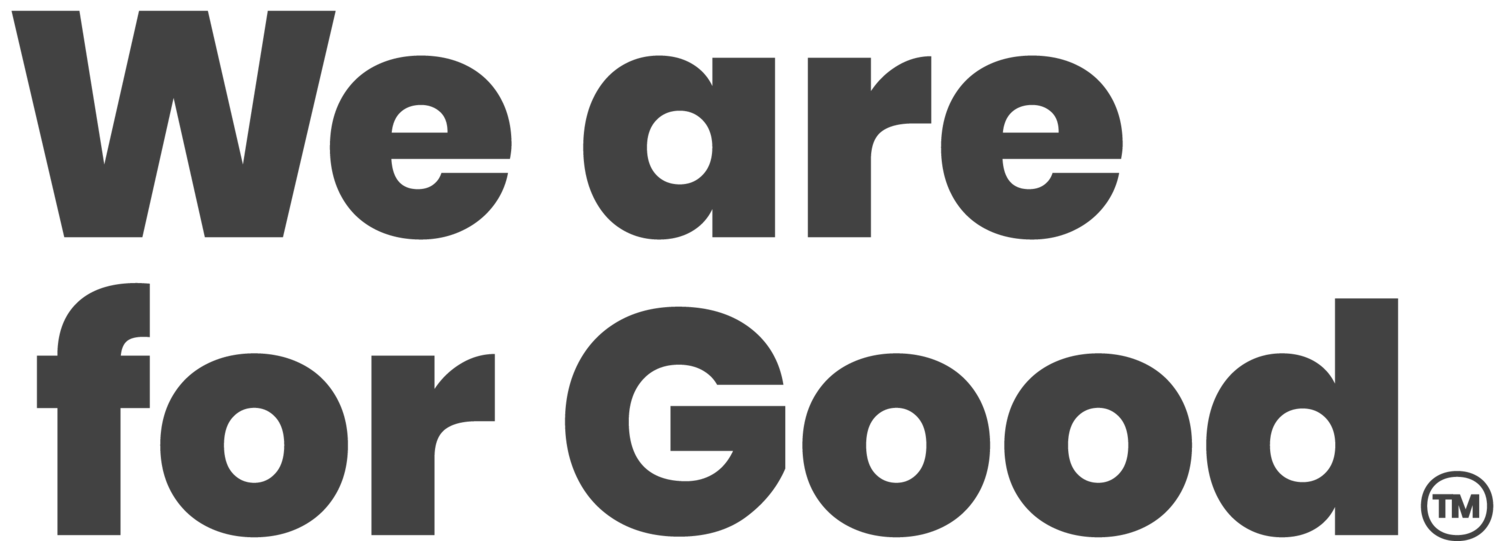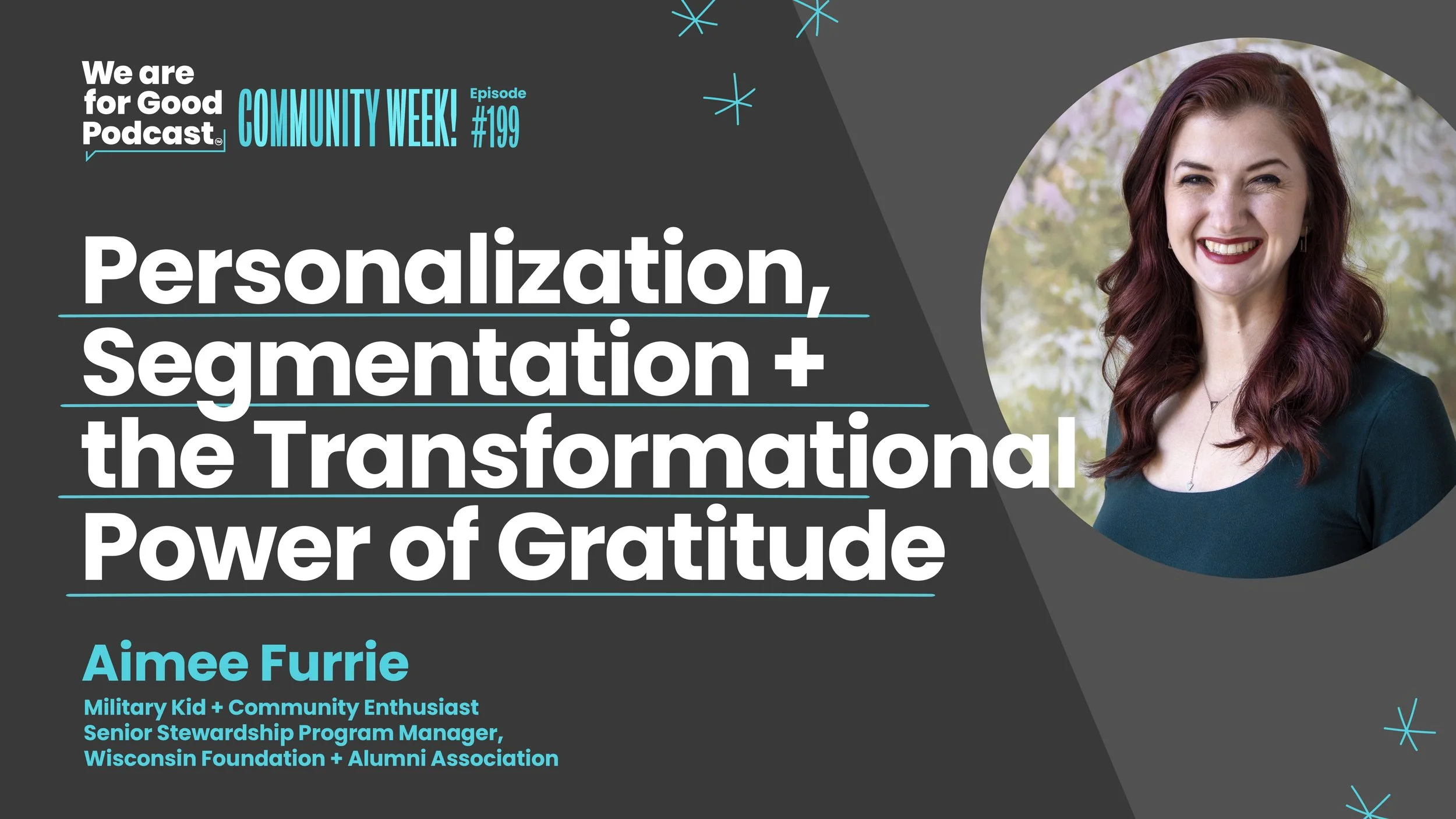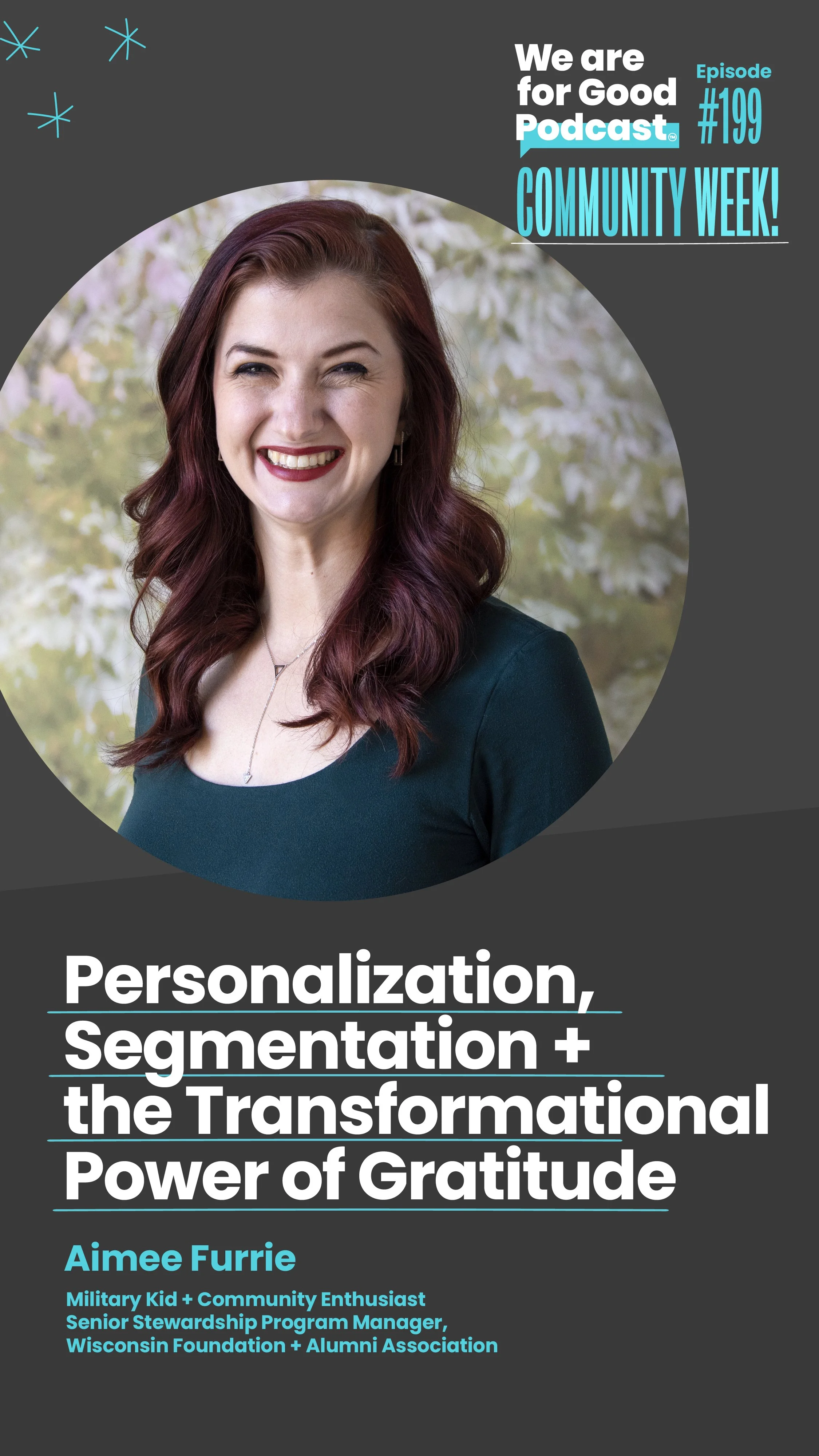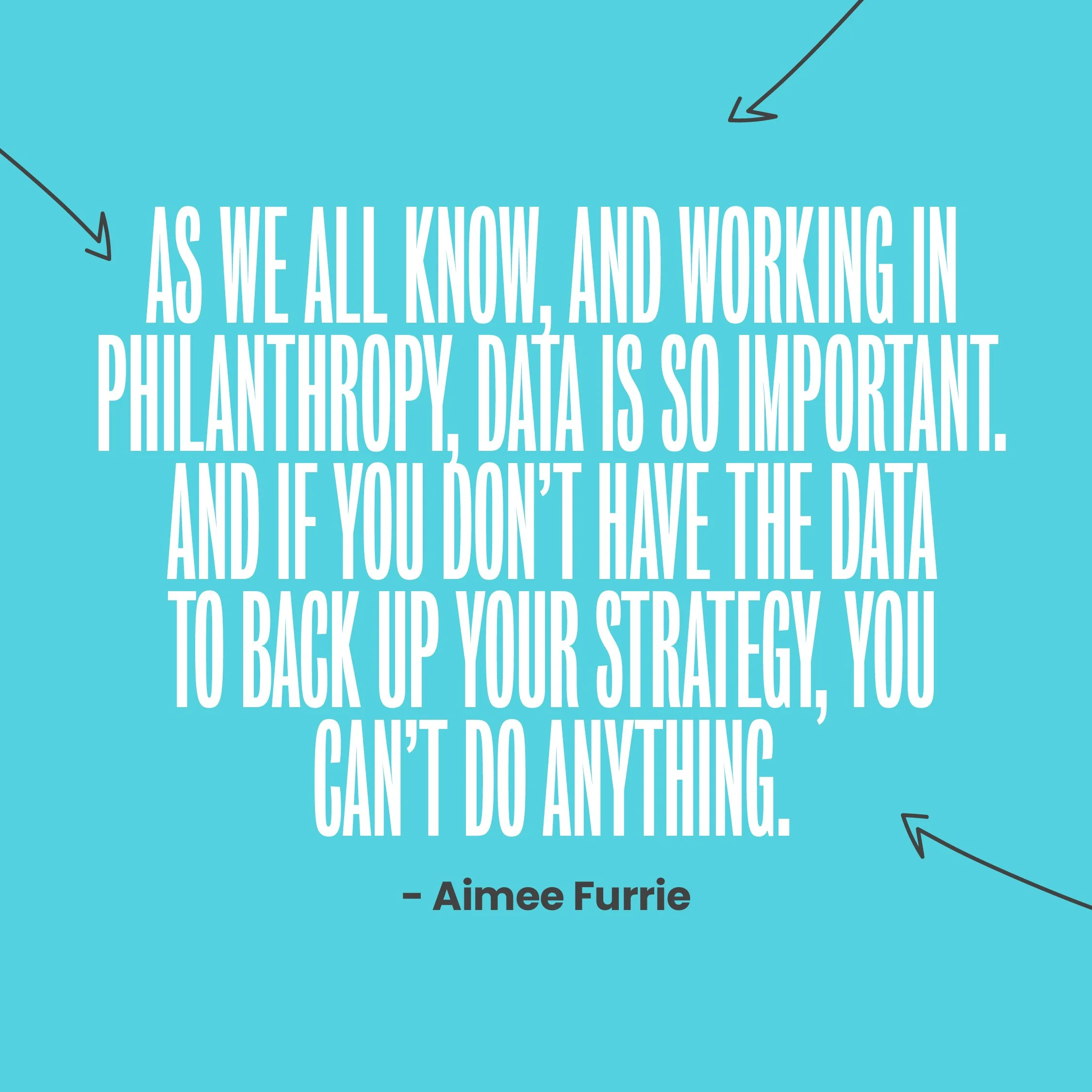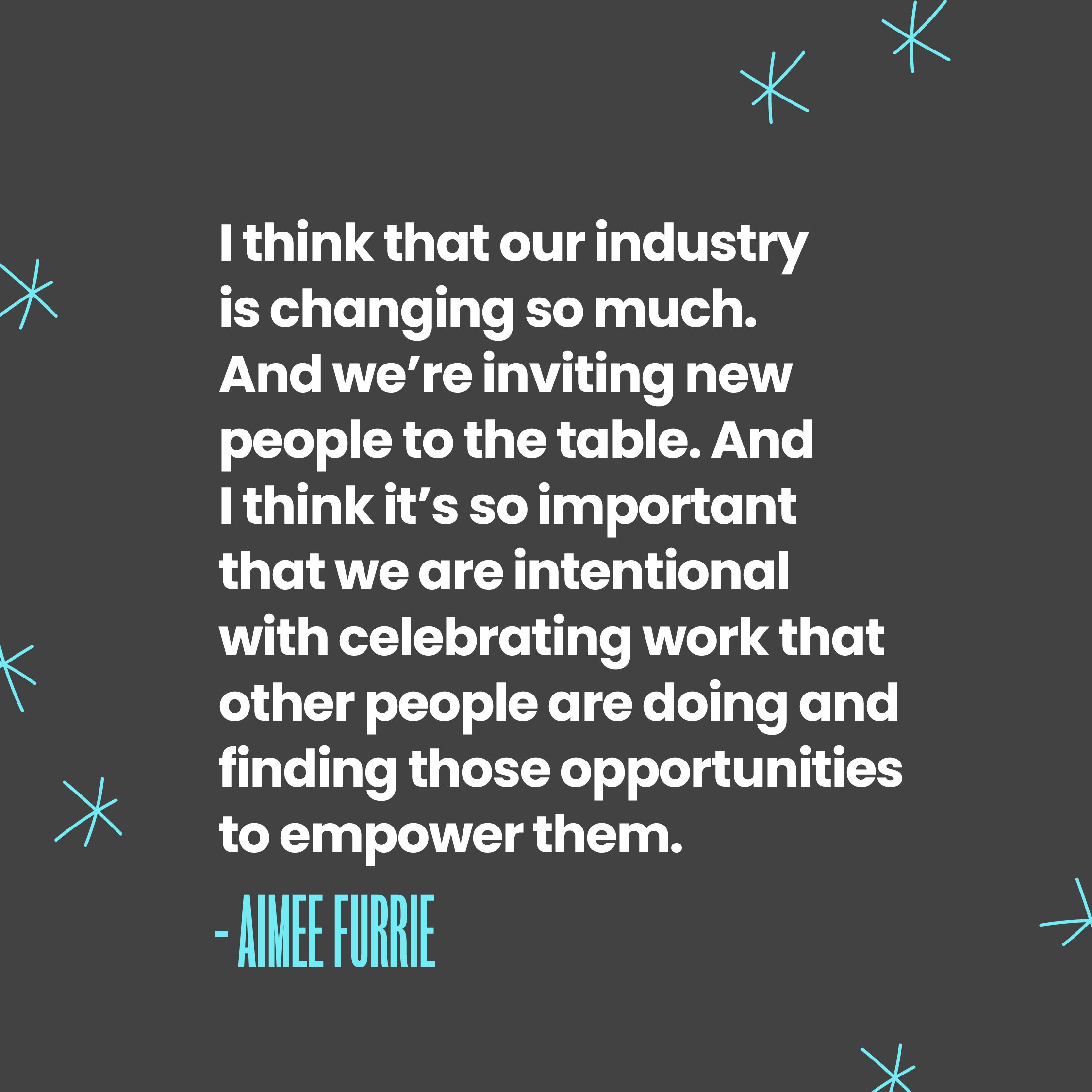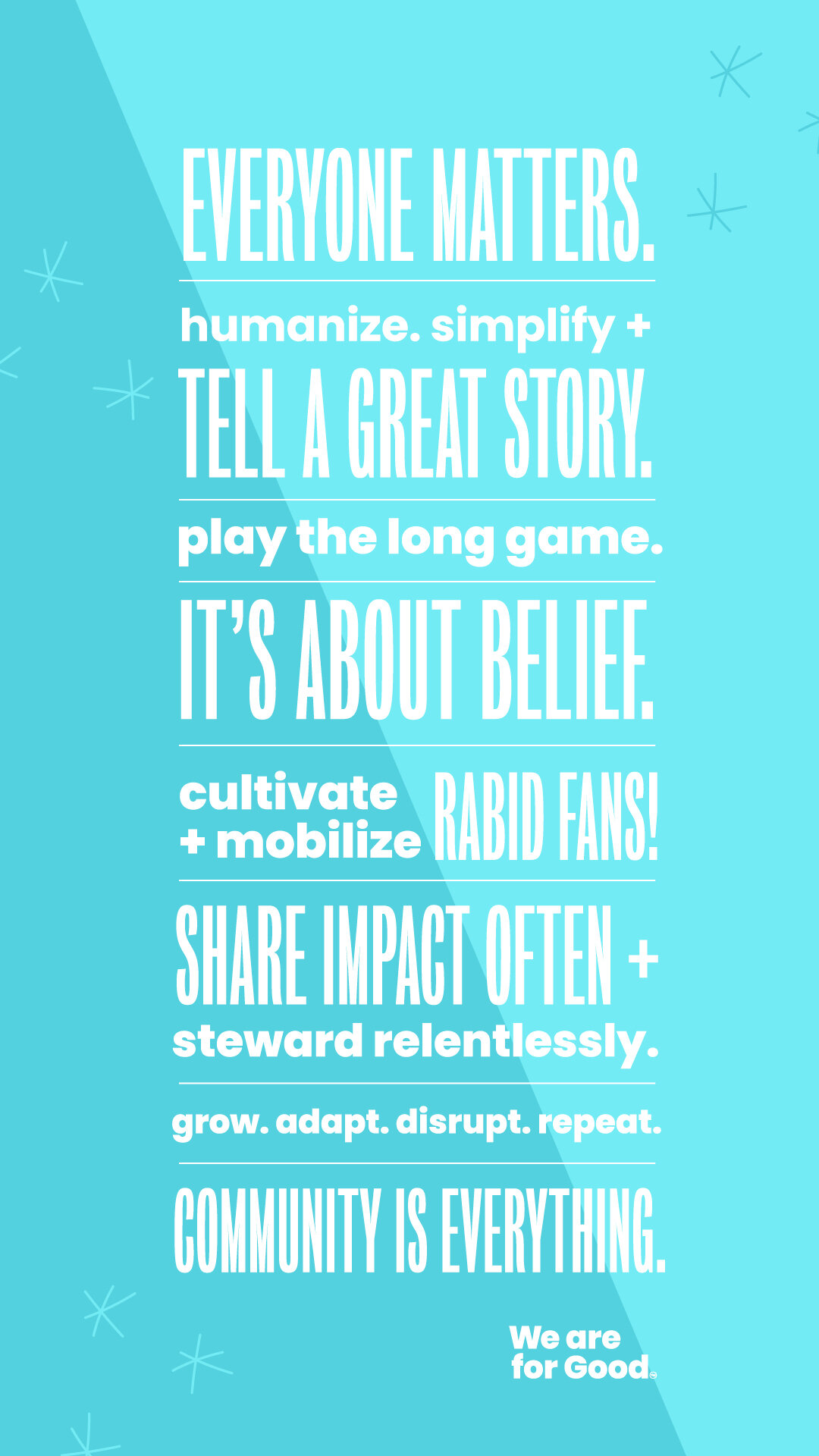199. Community Week: Personalization, Segmentation, and the Transformational Power of Gratitude - Aimee Furrie
Listen to this episode
Overview
Ya'll. University of Wisconsin Foundation & Alumni Association has a STORY! Tune in and hear what happened when its students sent more than 32,000 personalized videos to alums during the pandemic. [insert jaw drop] 🤯🥰👏!!! Aimee describes herself as a "philanthropy enthusiast committed to radically personalizing the donor experience." Come meet this rising star in the donor relations world🤩
Today’s Guest
Aimee Furrie, Senior Stewardship Program Manager, Wisconsin Foundation and Alumni Association
“We were really able to create this personalization at scale in a way that I didn’t know it was possible until it was done.”
Episode Transcript
Download Full Episode Transcript Here
Episode highlights
Aimee’s story and journey to where she is today (2:55)
Amy’s role as a donor relations professional (10:00)
Examples of projects that Amy’s team has done to make every donor feel like a major gift donor (12:50)
How they sent 35,000 personalized messages to donors during the pandemic through ThankView (17:30)
The impact of this campaign and the power of gratitude (27:00)
A powerful moment of philanthropy in Aimee’s life (36:00)
Aimee’s One Good Thing: In every opportunity, find a way to empower people. (40:00)
Powerful quotes
“I think from my experience in working in annual giving, gift processing, alumni relations, and in some of these different roles, it was so important to me to be able to not look at this as we are cheapening the experience for our major gift donors, principal gift donors or planned giving donors, but rather that we are rising the tide for all of those annual giving donors.” -Aimee
“We know that our annual giving donors include our planned giving donors, our major gift donors, our principal gift donors. By elevating that experience for this largest segment of our donor group, we're able to not only provide that really unique experience for donors that previously hadn't been able to be communicated with in such a personalized way.” -Aimee
“We decided that during this time, we don't really know what's going to happen next, we don't really know the best way to ask for support for these particular areas. We know that a lot of our communities are hurting right now, people are scared, people are confused. One, we don't want to come off as tone deaf, but two, we want to make sure that we are adding value, and we are communicating the right message to our donors and our friends during this time.” -Aimee
“As we all know, and working in philanthropy, data is so important. And if you don't have the data to back up your strategy, you can't do anything.” -Aimee
“Because ThankView work so well and how we're able to upload and integrate our data into that platform, it made it pretty seamless for us to incorporate all of that information into the platform. So that was really wonderful.” -Aimee
“If you're really breaking that down over about a month time, for 35,000 videos, we were we were really able to create this personalization at scale in a way that I didn't know it was possible until it was done.” -Aimee
“We sent these 35,000 videos out in batches, and I remember the first batch went out on a Friday afternoon, and Saturday morning, I was sitting at my dining room table in tears reading the responses from these people that were so grateful. And we’re so appreciative of these messages from the students.” -Aimee
“Not only we saw this from the donors perspective, but we saw the students being impacted by it too, which was, which was just as powerful.” -Aimee
“The pandemic probably pushed us in ways that maybe we weren't always comfortable when it came to reaching out to our connections or donors or alumni in a way that we just hadn't done before. And so by conducting such a large campaign that really reached all parts of the organization, we were able to have a proof of concept. We were able to show by the numbers, that donors from every demographic are responding to video, that donors at every life stage are reacting to video communication to digital communication.” -Aimee
“We had video calls, we sent out videos to people, we had phone calls, we you know you do video calls from your phone, like all of the different ways that we would pivot. But culturally, we were able to show that it works. And so that really allowed us to open up doors for our development officers, or donor experience officers or campus partners, faculty members to know that this is a way that they can reach their audience and people are responding. And so it was just so great to see that cultural shift during that time.” -Aimee
“In the time, since that communication took place, we were actually able to increase our donor retention numbers, which ended up resulting in a $1 million increase in our annual giving pool that that we had not seen in several years. So that was a huge impact on on that bottom line, the donors that had received and interacted with this communication days, 75 to 100 days sooner, which meant that there were more opportunities to ask them for that second guest in the year.” -Aimee
“We just saw that these donors were highly engaged, and if we engage with them, then they re-engage with us. And so that was just such a powerful thing to be able to show and to advocate for the work of donor relations in the field.” -Aimee
“You really created this platform where we can network with others in our field in a way that's so collaborative and in a way that we're really sharing ideas with each other, and just lifting each other up in a way to help everybody be more successful. So I think that that's just been really fantastic.” -Aimee
“I love listening to the podcast and hearing about folks and then going and connecting with them on LinkedIn or, what have you to just learn a little bit more about other people in the community?” -Aimee
“I think that our industry is changing so much. And we're inviting new people to the table. And I think it's so important that we are intentional with celebrating work that other people are doing and finding those opportunities to empower them.” -Aimee
connect with aimee
Website / LinkedIn / We Are For Good Community
Rate, Review, & Follow on Apple Podcasts
Are you a fan of the We Are For Good Podcast? Please consider rating and reviewing our show! This helps us serve more do-gooders — just like you — grow their own impact uprising.
First time doing reviewing a podcast? Don’t sweat - it’s super easy! Click here, scroll to the bottom, tap to rate the show with stars, and then click “Write a Review.” We’d love to hear what you loved most about this episode!
While you’re there, if you haven’t done so already, would you consider subscribing to the podcast? We curate inspiring conversations weekly to help you do more for your mission (and the occasional surprise minisode too!) and if you’re not subscribed, you could totally out. Subscribe now!
Join the Good Community!
The We are for good community
This is a safe place for deeper conversations. While we love this podcast, it is a very one-sided dialogue. It is great for starting conversations, but not continuing them. You can find friends, colleagues, and others to champion alongside. We believe community is everything and we wanted to create a place where people could learn and thrive and grow together (and also have a whole lot of fun).
